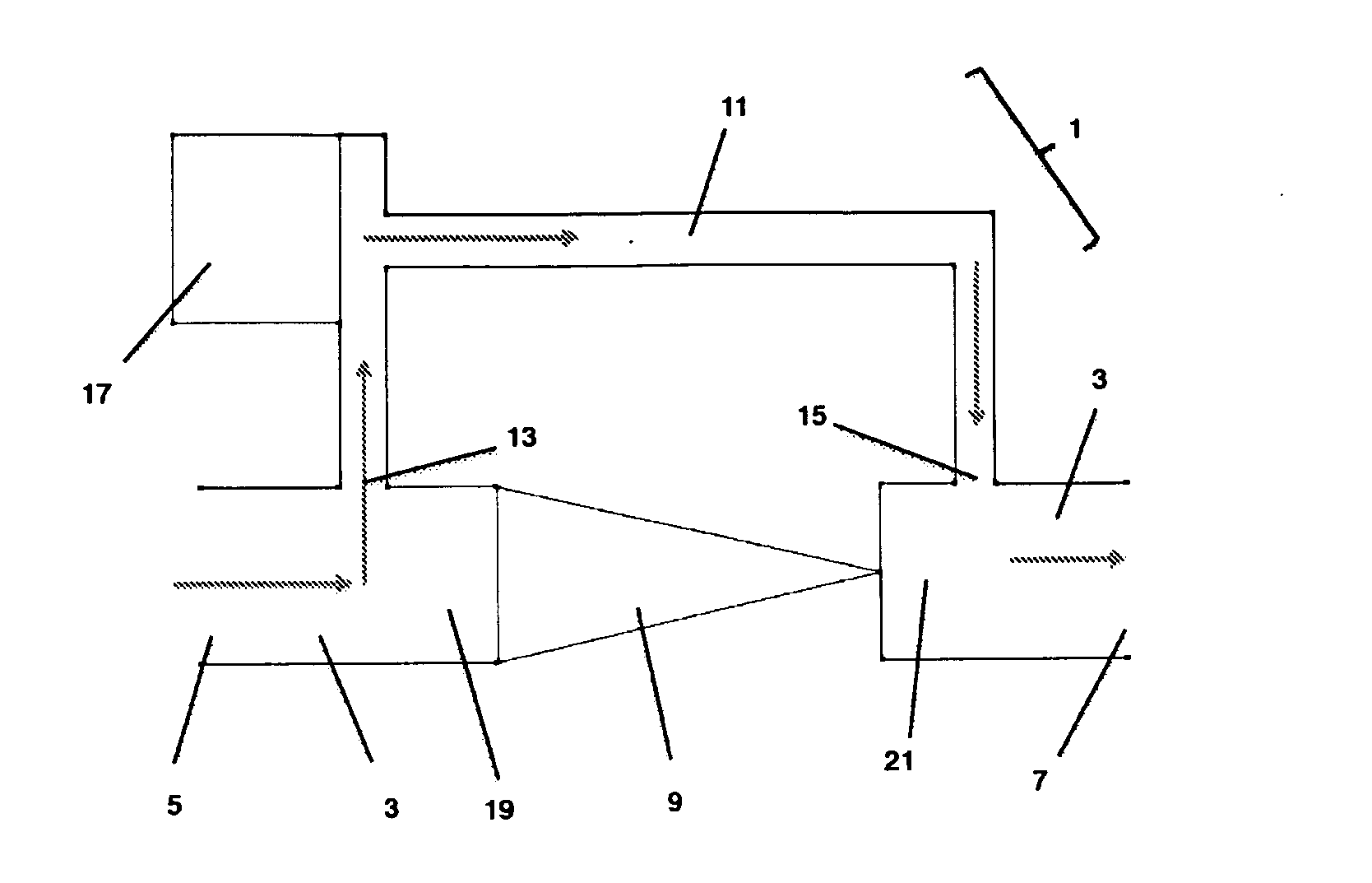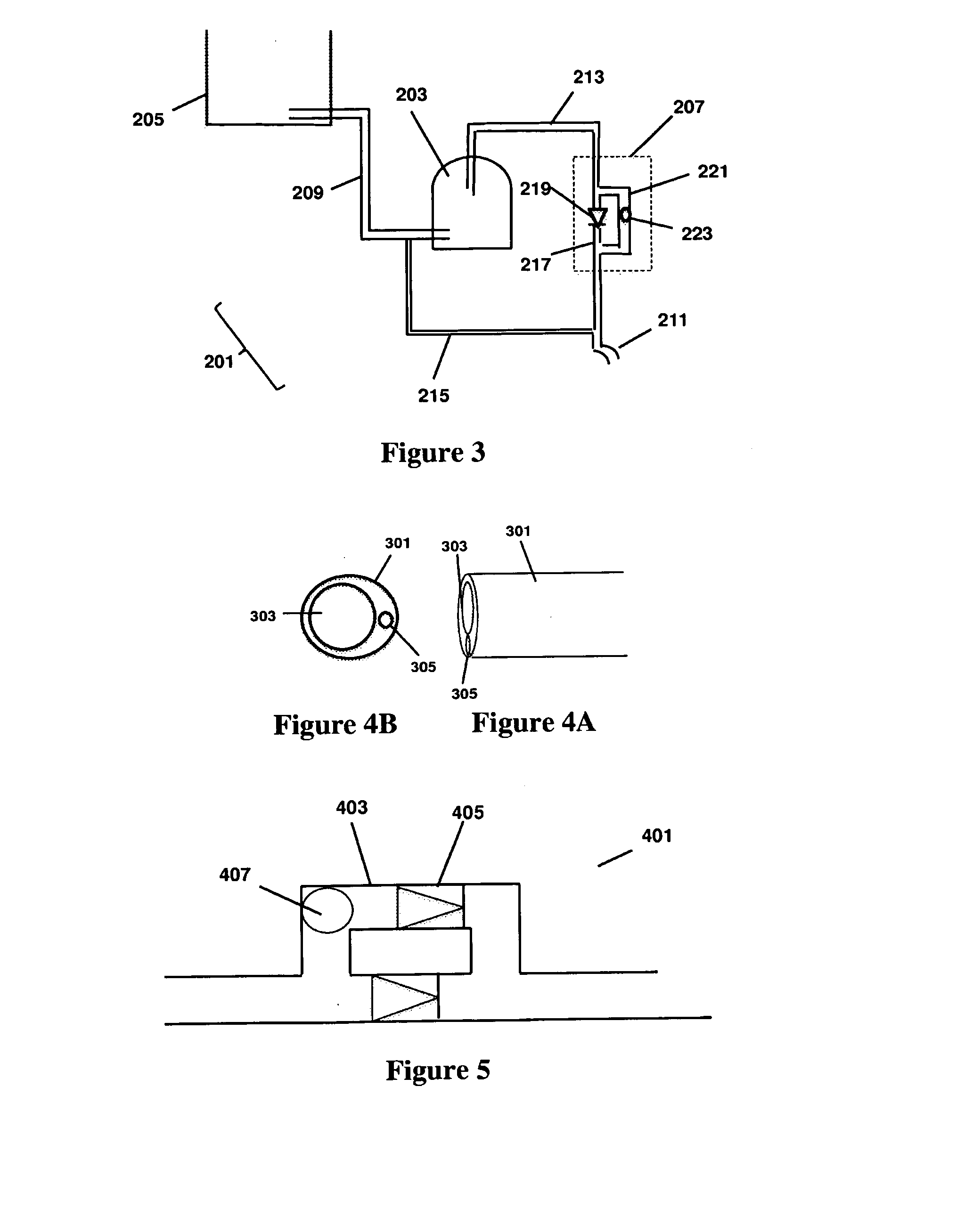Pressure enhancing device
- Summary
- Abstract
- Description
- Claims
- Application Information
AI Technical Summary
Benefits of technology
Problems solved by technology
Method used
Image
Examples
example 1
[0083]A supply feed (first conduit) of 22 mm diameter to a shower has an external head of pressure whereby without a pump fluid is supplied to the shower at 3.3 litres per minute, which would be considered a poor shower. The supply feed was then fitted with a device according to the present invention in which the second conduit has a diameter of 15 mm and is fitted with a pump of varying power. The effect of increasing pump power in this situation is examined. The results are shown in Table 1.
TABLE 1Pump power / WShower flow-rate / Lmin−1Notes03.315 (12 V)6.3Pump warm30 (19 V)7.7Pump hot but not too hot60 (24 V)8.2Pump hot and too hot
[0084]As can be seen from the above, the efficiency of the pump for a particular system drops off dramatically when the power of the pump is increased.
example 2
[0085]The following sets out the flow and pressure requirements for the application of a device of the present invention in pumping water from a tank at ground level through copper pipe to a solar panel at 15 metres height, using a relay arrangement of three devices in series. The data is summarized in the following table:
TABLE 2Scenario IScenario IIScenario IIIPipe diameter8 mm10 mm15 mmVolume per0.050.781.77metre length / lTotal volume / l0.751.182.66Flow rate2.5 l / min2.5 l / min2.5 l / minTransit time18 s28 s64 sPipe length15 m15 m15 mHydraulic head15 m15 m15 mHead loss / m0.2630.0840.03Pressure19 m head16.3 m head15.45 m headrequired
[0086]In order to achieve the flow rates and pressure required in a smaller diameter pipe, three devices of the present invention may be utilized in relay, sized to pump fluid in three 5 meter sections at the required flow-rate to overcome the head loss significantly more power and cost effectively than a single high pressure pump at ground level.
PUM
 Login to View More
Login to View More Abstract
Description
Claims
Application Information
 Login to View More
Login to View More - R&D
- Intellectual Property
- Life Sciences
- Materials
- Tech Scout
- Unparalleled Data Quality
- Higher Quality Content
- 60% Fewer Hallucinations
Browse by: Latest US Patents, China's latest patents, Technical Efficacy Thesaurus, Application Domain, Technology Topic, Popular Technical Reports.
© 2025 PatSnap. All rights reserved.Legal|Privacy policy|Modern Slavery Act Transparency Statement|Sitemap|About US| Contact US: help@patsnap.com



